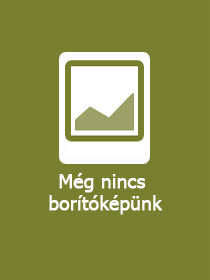
How Comics Are Made
A Visual History from the Drawing Board to the Printed Page
-
15% KEDVEZMÉNY?
- A kedvezmény csak az 'Értesítés a kedvenc témákról' hírlevelünk címzettjeinek rendeléseire érvényes.
- Kiadói listaár GBP 30.99
-
15 684 Ft (14 937 Ft + 5% áfa)
Az ár azért becsült, mert a rendelés pillanatában nem lehet pontosan tudni, hogy a beérkezéskor milyen lesz a forint árfolyama az adott termék eredeti devizájához képest. Ha a forint romlana, kissé többet, ha javulna, kissé kevesebbet kell majd fizetnie.
- Kedvezmény(ek) 15% (cc. 2 353 Ft off)
- Discounted price 13 331 Ft (12 696 Ft + 5% áfa)
Iratkozzon fel most és részesüljön kedvezőbb árainkból!
Feliratkozom
15 684 Ft

Beszerezhetőség
Még nem jelent meg, de rendelhető. A megjelenéstől számított néhány héten belül megérkezik.
Why don't you give exact delivery time?
A beszerzés időigényét az eddigi tapasztalatokra alapozva adjuk meg. Azért becsült, mert a terméket külföldről hozzuk be, így a kiadó kiszolgálásának pillanatnyi gyorsaságától is függ. A megadottnál gyorsabb és lassabb szállítás is elképzelhető, de mindent megteszünk, hogy Ön a lehető leghamarabb jusson hozzá a termékhez.
A termék adatai:
- Kiadó Andrews McMeel Publishing
- Megjelenés dátuma 2025. július 3.
- Kötetek száma Hardback
- ISBN 9781524898779
- Kötéstípus Keménykötés
- Terjedelem288 oldal
- Méret 266x209x25 mm
- Súly 1276 g
- Nyelv angol 700
Kategóriák
Rövid leírás:
“No one, before now, has written a history of the comic strip as a technological artifact—not, at least, in such depth, and on such a sound foundation of research.” – Michael Chabon, author, The Amazing Adventures of Kavalier & Clay
If you love comics, you’ll love this visual history of comic strips featuring all of the methods, techniques, and wizardry that made the funny pages such an important staple of American life. Featuring interviews with dozens of the century&&&39;s most famous cartoonists and hundreds of rare archival images.
Hosszú leírás:
“No one, before now, has written a history of the comic strip as a technological artifact—not, at least, in such depth, and on such a sound foundation of research.” – Michael Chabon, author, The Amazing Adventures of Kavalier & Clay
If you love comics, you’ll love this visual history of comic strips featuring all of the methods, techniques, and wizardry that made the funny pages such an important staple of American life. Featuring interviews with dozens of the century&&&39;s most famous cartoonists and hundreds of rare archival images.
How Comics Are Made covers&&&160;the entire history of newspaper comics from a unique angle—how they were made and printed.&&&160;This book combines years of research and dozens of interviews with cartoonists, historians, and production people to tell the story of how a comic starts with an artist’s hand and makes it way through transformations into print and onto a digital screen.&&&160;You’ll see reproductions of art and artifacts that have never appeared in print anywhere, and some historic comics will appear for the first time ever in any medium in this book.&&&160;And you’ll find out about metal etching, Dragon’s Blood (a real thing), flong (also a real thing), and the massively, almost impossibly complicated path that original artwork took to get onto newsprint in the days of metal relief printing.
The book is divided by time and transitions, from the start of consistently appearing daily and weekly comics in newspapers:
- The Early Days:&&&160;From the Yellow Kid in the 1890s to the 1910s
- Syndication in Metal:&&&160;When it became affordable to make hundreds or thousands of copies of daily strips to send around the country (or world), from the 1910s to 1970s
- Flatland:&&&160;Newspapers’ switch from relief to flat printing and the shift to purely photographic transformations from the 1950s to the 1980s
- Pixel Perfect:&&&160;The transition from photographic to digital, from scanning to digital creation, from the 1970s to 2000s and through the present day
- Webcomics and Beyond:&&&160;Look, ma, no ink! Digital comics read online and sometimes put on press to make books
Each section features interviews with artists, reproductions of original cartoon art, printing and coloring artifacts, and the way cartoons appeared in print—or on screen.
"…no one, before now, has written a history of the comic strip as a technological artifact — not, at least, in such depth, and on such a sound foundation of research."&&&160; (Michael Chabon, author, The Amazing Adventures of Kavalier & Clay, from the foreword) Több







